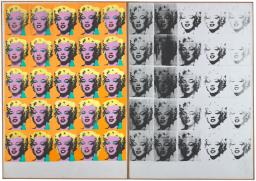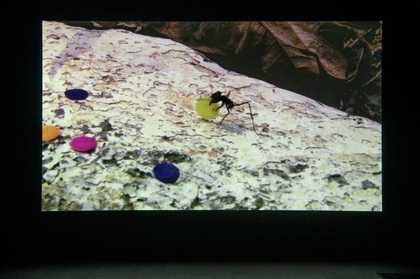What colours do you associate with festivals or celebrations?
The Start display shows art from a range of countries, cultures and times, linked by a focus on colour. The film in this first room shows red and black ants carry coloured confetti across the floor of the Brazilian rainforest. The brightly coloured discs contrast with the brown tones of the earth.
The title of the film translates as ‘Ash Wednesday’, the day marking the start of the Christian season of Lent. This is a forty-day period of fasting before Easter. It is also the last day of the Brazilian carnival festival, when colourful confetti is thrown in the streets. Perhaps the ants are tidying up after the end of the festival.
The film tries to capture the mood of the end of the festival, when there is a certain melancholy after the days of madness and excess.
Rivane Neuenschwander.
Art in this room


